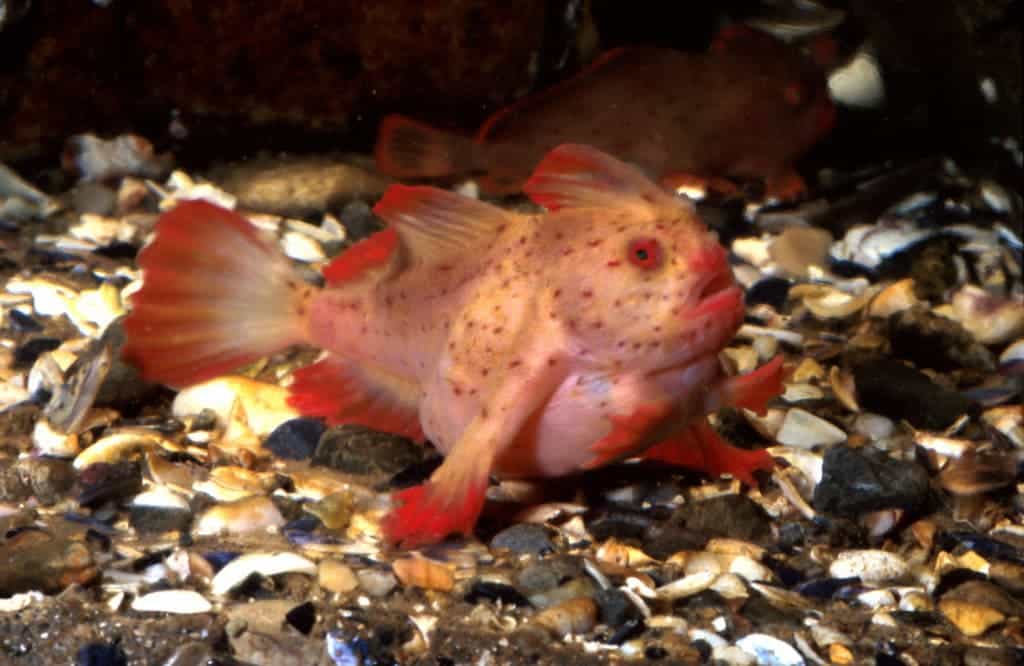The Red Handfish (Thymichthys politus) is quite possibly the rarest fish on Earth, with less than 40 known individuals surviving in the wild. Now, divers have found a new population which doubles the known numbers of the species.

Handfish is a generic name which accounts for 14 species in the coastal waters of southern Australia and Tasmania. Handfish are known for moving around by walking on the sea floor rather than swimming, with their highly modified fins which resemble hands, thus lending them their name.
Most handfish species are vulnerable to extinction, but the Red Handfish is critically endangered, with the only known population residing in Frederick Henry Bay near south-east Tasmania — a site which covers just 50 metres by 20 metres (165 x 65 feet). Now, divers have found a new area which hosts the species.
It all started when a member of the public reported seeing an individual handfish. This sent divers and biologists on a frantic search. After two days, the teams were almost ready to give up the search, when they finally found one. IMAS Technical Officer Antonia Cooper spotted the first fish when she had all but abandoned hope.
“We were diving for approximately three and a half hours and at about the two hour mark we were all looking at each other thinking this is not looking promising,” Ms Cooper said. “My dive partner went to tell the other divers that we were going to start heading in and I was half-heartedly flicking algae around when, lo and behold, I found a red handfish.”
This is exciting for several reasons. For starters, it means that the species’ gene pool isn’t as limited as we thought. Genetic bottlenecks can be a long-term threat to small populations, even if they manage to survive in their natural environment. This also means that the Red Handfish don’t require exactly the conditions found in the Frederick Henry Bay reef, which in turn means that there might be other populations waiting to be discovered.
“Finding a new population that is definitely distinct from the existing one is very exciting. It means there’s potentially a bigger gene pool and also that there are potentially other populations out there that we’re yet to find, so it’s very exciting indeed,” Ms Cooper added.

The work is also exciting because it highlights another successful collaboration between scientists and members of the general public. The finding also allows researchers to better understand this species and hopefully establish a solid conservation plan for the future.
“Finding this second population is a huge relief as it effectively doubles how many we think are left on the planet,” said Dr Rick Stuart-Smith, who co-founded Reef Life Survey in 2007.
“We’ve already learned a lot from finding this second population because their habitat isn’t identical to that of the first population, so we can take some heart from knowing Red Handfish are not as critically dependent on that particular set of local conditions.”
Of course, doubling from 40 to 80 is still not where you’d want to be. The Red Handfish, like several other handfish species, is still in dire straits, and it’s unlikely if it will manage to survive in future years. Population bottlenecks are typically followed either by a recovery or an extinction, and it’s unclear which way the Red Handfish will go. For instance, one of its relatives, the Spotted Handfish (Brachionichthys hirsutus), is still reported around Tasmania, while another one, Ziebell’s Handfish (Brachiopsilus ziebelli), hasn’t been observed in over a decade and is presumed to be extinct.


